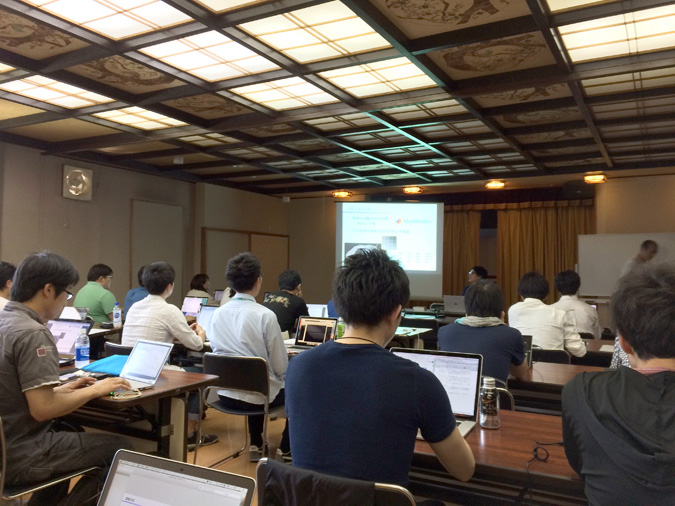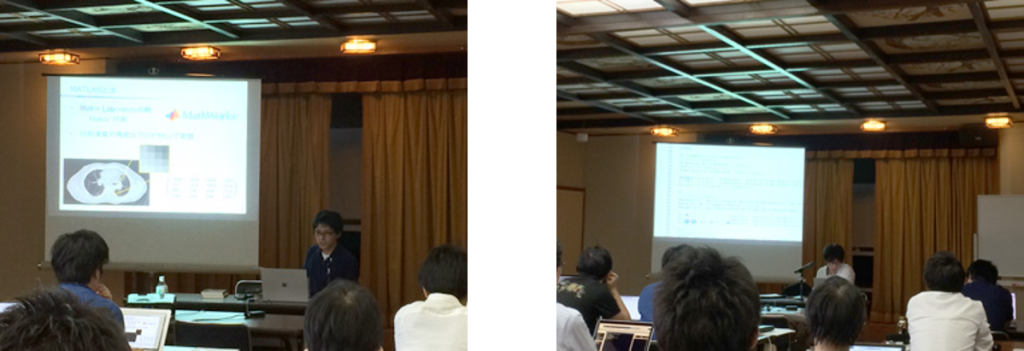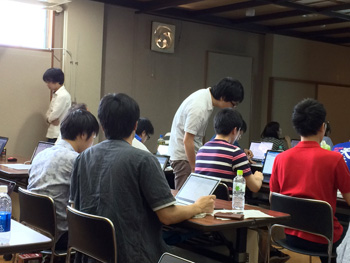2017.7.8~7.9:47th CMPFG regular meeting (8th Overnight Seminar)
The 47th CMPFG regular meeting has been held in Itoen Hotel New Sakura, Kinugawaonsen Nikko, Tochigi, Japan. Mr. Kanai (D3) and Mr. Nakajima (D2) have attended the meeting as a lecturer. Mr. Chiba (assistant), Mr. Takayama (assistant), Mr. Abe (M2), Mr. Ieko (M2), Mr. Ikeda (M2), Mr. Ishikubo (M1), Mr. Kajikawa (M1), Mr. Sato (M1), and Mr. Matsumoto (M1) have also attended it.
■Date: July 8-9 ,2017
■Venue: Itoen Hotel New Sakura, Kinugawaonsen Nikko, Tochigi, Japan.
■Conference name:47th CMPFG regular meeting (8th Overnight Seminar)

Takuya Matsumoto(M1)
CMPFG’s 47th Regular Meeting (8th Overnight Seminar) held on July 8-9, 2017 at Kinugawa Onsen, Nikko, Tochigi, was attended by Dr. Chiba, Dr. Takayama, Mr. Kanai(D3), Mr. Nakajima(D2), Mr. Abe(M2), Mr. Ieko(M2), Mr. Ikeda(M2), Mr. Ishikubo(M1), Mr. Kajikawa(M1), Mr. Satou(M1), Mr. Matsumoto(M1).
The seminar was held in three parts over two days. In the first part, Dr. Kanai gave a lecture on the basics of MATLAB and the rudiments of DICOM RT data analysis, including the creation of a simple CT viewer. In the second part, based on the content of the first part, Dr. Kanai explained how to create a calculation program to display a dose volume histogram (DVH) from DICOM data in MATLAB. In his lecture on the second day, Dr. Masahide Saito (University of Yamanashi) summarized the contents of the first day by creating a program for gamma analysis used in IMRT dose distribution analysis in MATLAB and further developing it with a GUI.
As mentioned in the lecture, MATLAB is a programming language that excels in matrix operations and is a very useful tool in our field that handles image information. I myself am still learning MTALAB, but this seminar was very valuable for me because it covered the flow from the basics to applications in an exercise format. I would like to use this seminar to deepen my understanding of MATLAB and make the most of it in my future research.
On the evening of the first day, an opinion exchange meeting was held, which was very active and transcended the boundaries of universities and institutions. The participants listened intently to our opinions as students and offered sincere advice, making it an extremely valuable experience for us. We would like to continue to actively participate in such occasions in the future to broaden our perspectives.
Finally, I would like to take this opportunity to thank Mr. Suzuki of Ichikawa General Hospital of Tokyo Dental College, the members of the Clinical Medical Physics Research Group, and the members of the Department of Radiation Science, Graduate School of Health Sciences, Tokyo Metropolitan University for providing us with this valuable opportunity. Thank you very much.

Dr. Kanai and Dr. Nakajima’s lecture

Lectures were given in a hands-on format
